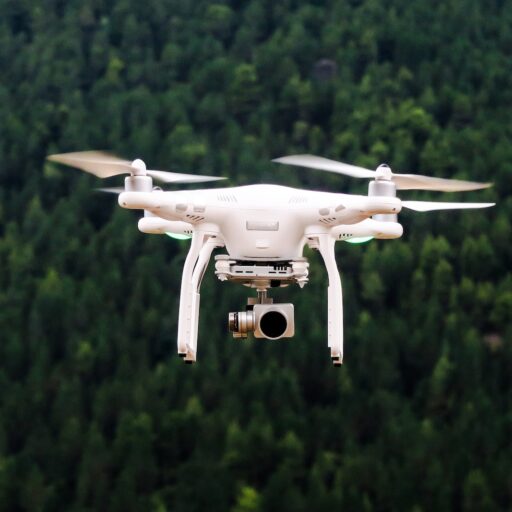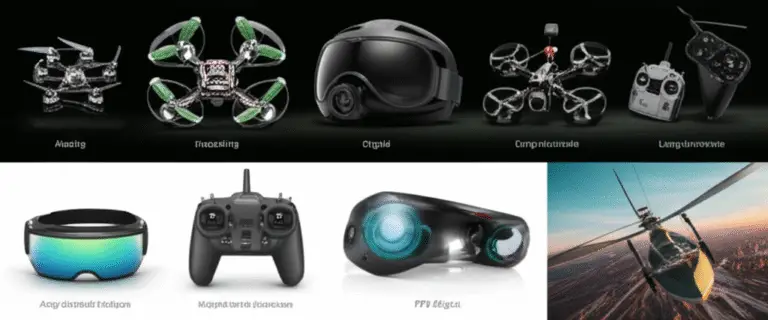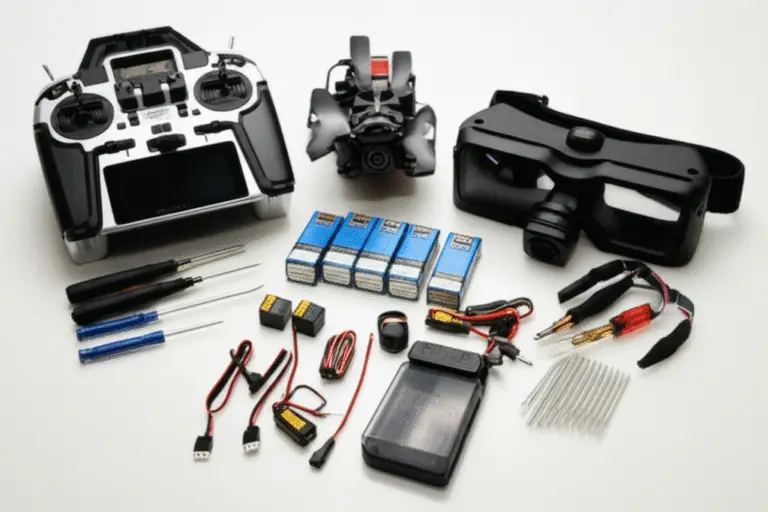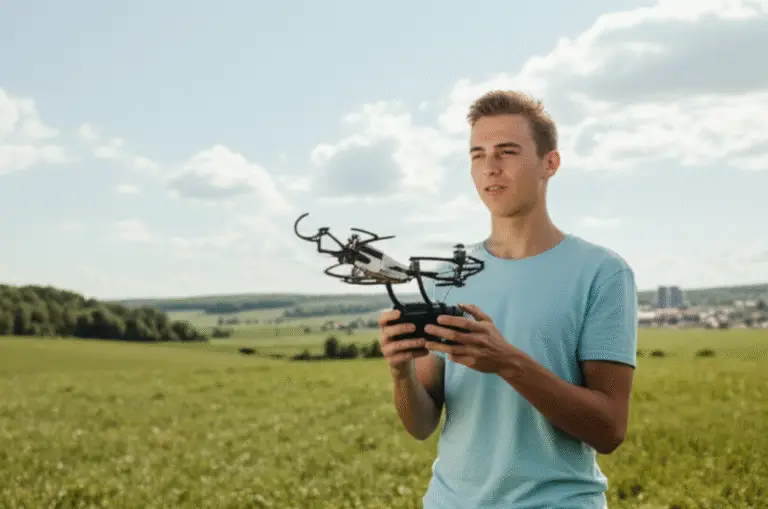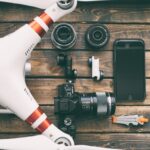Support our educational content for free when you purchase through links on our site. Learn more
Which Type of Drone Is the Easiest to Fly? Top 6 Picks for 2025 🚁
Picture this: your first drone flight, the controller trembling in your hands, the drone hovering like a nervous hummingbird—then suddenly, it steadies, glides, and you realize, “Hey, I’m actually flying this thing!” At Drone Brands™, we’ve helped countless rookies transform those shaky first flights into smooth aerial adventures. But here’s the million-dollar question: which type of drone is truly the easiest to fly?
In this comprehensive guide, we peel back the layers of drone tech—from tiny indoor flyers to smart camera drones—to reveal the six best types for beginners in 2025. We’ll dive into must-have features like GPS stabilization, obstacle avoidance, and intuitive controls, plus share insider tips to avoid rookie mistakes. Whether you want a budget-friendly starter or a pro-level drone that still feels like a breeze, we’ve got you covered. Ready to find your perfect first drone? Let’s take off!
Key Takeaways
- Micro and mini drones like the Ryze Tello are perfect for indoor practice and absolute beginners.
- Consumer camera drones such as the DJI Mini 4 Pro offer the best blend of ease, safety, and photo quality.
- Obstacle avoidance and GPS stabilization are game-changers for beginner-friendly flight.
- Avoid FPV racing drones initially—they’re fast but unforgiving.
- Understanding local drone laws and practicing in calm weather improve your flying experience.
- Our top-rated easy-to-fly drones include DJI Mini 4 Pro, Ryze Tello, and Potensic Atom 2.
👉 Shop beginner-friendly drones here:
Table of Contents
- ⚡️ Quick Tips and Facts
- 🕰️ The Evolution of Easy Flying: A Brief History of Drone Accessibility
- 🤔 What Does “Easiest to Fly” Really Mean? Unpacking Drone User-Friendliness
- ⚙️ The Anatomy of Simplicity: Key Features That Make Drones Easy to Pilot
- 🛰️ GPS Stabilization & Hover Accuracy: The Invisible Hand
- 🛑 Obstacle Avoidance Systems: Your Drone’s Guardian Angel
- ✨ Intelligent Flight Modes: Automation for Awesome Shots
- 🎮 Intuitive Controllers & User Interfaces: Making Sense of the Sticks
- ⬆️⬇️ Automated Takeoff & Landing: No More Belly Flops!
- 🛡️ Durability & Crash Resistance: Bouncing Back from Blunders
- Navigating the Drone Landscape: Which Types Are Truly Beginner-Friendly?
- 1️⃣ Tiny Titans: Micro & Mini Drones for Indoor Fun & First Flights
- 2️⃣ The Sweet Spot: Consumer Camera Drones with Smart Features
- 3️⃣ Budget Buddies: Toy Drones – Are They Easier or Just Cheaper?
- 4️⃣ The Adrenaline Rush: FPV & Racing Drones (Why They’re NOT for Beginners)
- 5️⃣ Specialized Simplicity: Selfie Drones & Autonomous Flyers
- 6️⃣ Heavy Lifters: Professional & Enterprise Drones (Beyond Beginner Scope)
- 🏆 Our Top Picks: The Easiest Drones for Aspiring Pilots in 2024-2025
- 🌬️ Beyond the Controls: Environmental & Piloting Factors for Easy Flights
- ❌ Common Rookie Mistakes: What NOT to Do on Your First Drone Flights
- 🎓 Mastering the Skies: Essential Tips for Your First 10 Hours of Flight Time
- ⚖️ Staying Legal & Safe: Understanding Drone Regulations for Beginners
- 🚀 The Future of Flight: How Technology is Making Drones Even Easier to Fly
- ✅ Conclusion: Your First Flight Awaits!
- 🔗 Recommended Links for Aspiring Drone Pilots
- ❓ Frequently Asked Questions (FAQ) About Easy Drones
- 📚 Reference Links & Further Reading
⚡️ Quick Tips and Facts
Welcome to the skies! If you’re wondering which type of drone is the easiest to fly, you’ve landed in the right place. As the drone pilots at Drone Brands™ specializing in Aerial Adventures with Drones, we’ve seen it all—from shaky first flights to smooth cinematic glides. Here’s a quick cheat sheet to get you started:
- ✅ Micro and mini drones are the easiest to fly indoors and in calm conditions.
- ✅ Drones with GPS stabilization and auto-hover features make flying feel like magic.
- ✅ Obstacle avoidance sensors are a beginner’s best friend, preventing crashes.
- ✅ Intelligent flight modes like Follow Me, Orbit, and Waypoints reduce pilot workload.
- ❌ Avoid FPV racing drones if you’re just starting—they’re fast and unforgiving.
- ✅ Lightweight drones under 250g often don’t require FAA registration in the US.
- ✅ The DJI Mini 4K and Ryze Tello are crowd favorites for beginners.
- ✅ Practice in open spaces with calm weather for the smoothest learning curve.
For a deep dive into the best beginner drones, check out our detailed guide on DJI Drones: 17 Must-Know Facts, Reviews & Pro Tips for 2025 🚁.
Ready to unravel what makes a drone easy to fly? Let’s take off!
🕰️ The Evolution of Easy Flying: A Brief History of Drone Accessibility
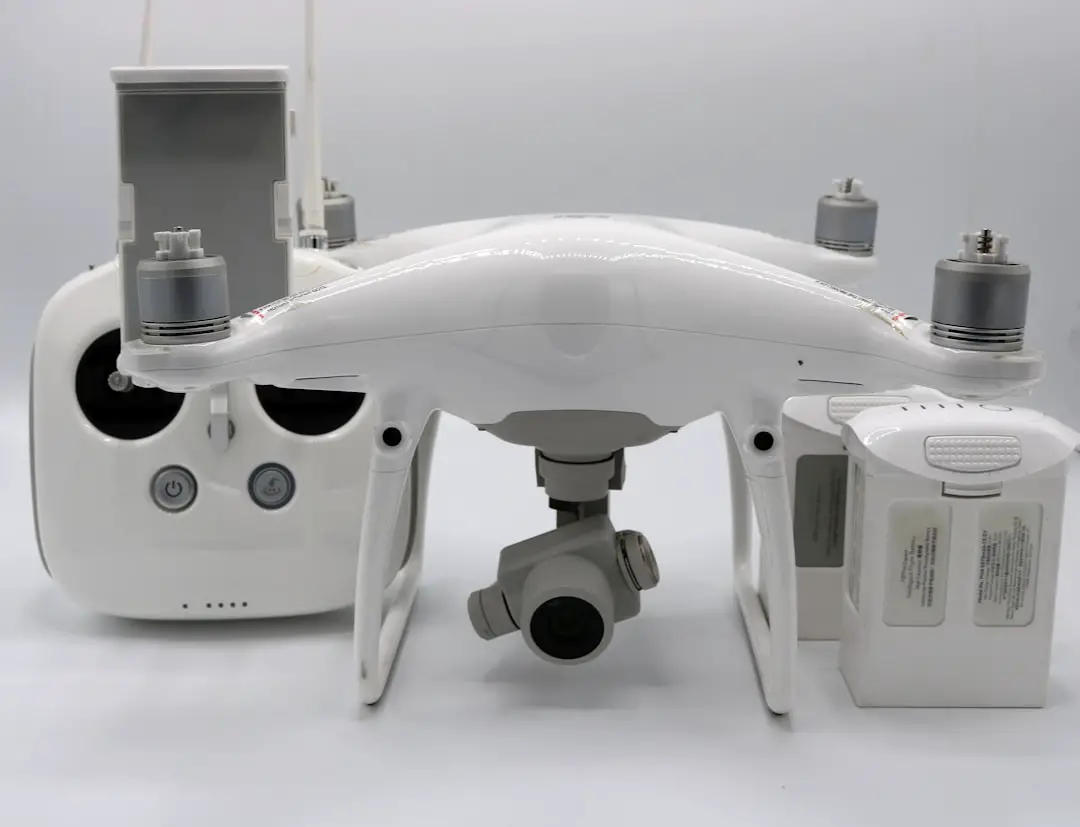
Flying drones today is a breeze compared to the early days. Let’s rewind the propellers and see how drone technology evolved to become so user-friendly.
Early Days: The Wild West of Flight
Back in the early 2000s, drones were mostly military or hobbyist gadgets. Controls were clunky, and crashes were common. Pilots had to master manual flying skills akin to learning to ride a bike on a tightrope.
The Rise of Consumer Drones
Fast forward to the 2010s, companies like DJI revolutionized the market with drones like the Phantom series. Suddenly, GPS stabilization, auto-hover, and return-to-home features became standard, making drones accessible to non-pilots.
Today: Smart, Safe, and Simple
Modern drones boast AI-powered obstacle avoidance, intelligent flight modes, and compact designs that fit in your backpack. Brands like DJI, Autel Robotics, and Potensic have made it easier than ever to get airborne without a pilot’s license (in many countries).
Curious about the latest beginner-friendly drones? Keep reading—we’ll unpack the tech that makes flying a joy.
🤔 What Does “Easiest to Fly” Really Mean? Unpacking Drone User-Friendliness
Before we crown the easiest drone to fly, let’s clarify what “easy” means in drone terms.
Key Factors Defining Ease of Flight
- Stability: Can the drone hover steadily without constant input?
- Control Intuitiveness: How simple is the controller or app interface?
- Safety Features: Does it avoid obstacles and return home automatically?
- Learning Curve: How quickly can a novice pilot master basic maneuvers?
- Durability: Can it survive beginner crashes without breaking?
Why It Matters
Ease of flying isn’t just about fun—it’s about confidence and safety. A drone that’s hard to control can lead to frustration, wasted batteries, and costly repairs.
Our Take
From our experience, drones with GPS stabilization, auto-hover, and intelligent flight modes are the sweet spot for beginners. But there’s more—let’s dissect the features that make flying a breeze.
⚙️ The Anatomy of Simplicity: Key Features That Make Drones Easy to Pilot
What magic ingredients turn a drone from a buzzing mystery into your new best flying buddy? Here’s the breakdown.
🛰️ GPS Stabilization & Hover Accuracy: The Invisible Hand
GPS tech allows drones to lock their position in the air, so you don’t have to fight the wind or constantly adjust controls. This means:
- Stable hovering even in light breezes.
- Precise positioning for photos and videos.
- Automatic return-to-home when signal is lost.
Example: The DJI Mini 4 Pro uses GPS to maintain position with surgical precision, making it a top pick for beginners.
🛑 Obstacle Avoidance Systems: Your Drone’s Guardian Angel
Sensors detect objects in the drone’s path and either slow down or stop to avoid collisions. This feature:
- Saves your drone from crashes.
- Builds pilot confidence.
- Enables safer flights in cluttered environments.
Note: Not all beginner drones have this; the DJI Mini 4 Pro and Mavic 3 Pro do, but budget models like Ryze Tello don’t.
✨ Intelligent Flight Modes: Automation for Awesome Shots
Modes like Follow Me, Orbit, and Waypoint Navigation let the drone fly itself while you focus on framing the shot. Benefits include:
- Easier control for newbies.
- Creative, cinematic footage.
- Reduced pilot workload.
🎮 Intuitive Controllers & User Interfaces: Making Sense of the Sticks
A controller that feels natural and an app that’s easy to navigate can make or break your flying experience.
- Some drones use dedicated controllers (e.g., DJI RC-N1).
- Others rely on smartphone apps (e.g., Ryze Tello).
- Look for clear tutorials and responsive controls.
⬆️⬇️ Automated Takeoff & Landing: No More Belly Flops!
One-touch takeoff and landing features mean you don’t have to manually manage throttle and descent—perfect for first-timers.
🛡️ Durability & Crash Resistance: Bouncing Back from Blunders
Beginner drones often feature propeller guards, flexible frames, and easy-to-replace parts to survive inevitable bumps.
Navigating the Drone Landscape: Which Types Are Truly Beginner-Friendly?
Let’s explore the different drone categories and which ones are easiest for you to master.
1️⃣ Tiny Titans: Micro & Mini Drones for Indoor Fun & First Flights
Examples: Ryze Tello, DJI Mini 4K, Potensic Atom 2
- Pros: Lightweight, safe indoors, easy to control.
- Cons: Limited range and camera quality.
- Best for: Kids, casual flyers, indoor practice.
2️⃣ The Sweet Spot: Consumer Camera Drones with Smart Features
Examples: DJI Mini 4 Pro, DJI Air 3S, Autel Evo Lite+
- Pros: GPS, obstacle avoidance, great cameras.
- Cons: Higher price, slightly heavier.
- Best for: Beginners wanting quality photos and videos.
3️⃣ Budget Buddies: Toy Drones – Are They Easier or Just Cheaper?
Examples: Holy Stone HS210, Snaptain S5C
- Pros: Very affordable, simple controls.
- Cons: Short battery life, poor camera, limited features.
- Best for: Absolute beginners on a tight budget.
4️⃣ The Adrenaline Rush: FPV & Racing Drones (Why They’re NOT for Beginners)
Examples: BetaFPV Cetus X, DJI Avata 2
- Pros: Fast, immersive experience.
- Cons: Steep learning curve, fragile.
- Best for: Experienced pilots and thrill-seekers.
5️⃣ Specialized Simplicity: Selfie Drones & Autonomous Flyers
Examples: HoverAir X1 Pro, DJI Neo
- Pros: Palm-sized, automatic tracking.
- Cons: Limited flight time, niche use.
- Best for: Social media enthusiasts and casual flyers.
6️⃣ Heavy Lifters: Professional & Enterprise Drones (Beyond Beginner Scope)
Examples: DJI Matrice 300 RTK, Freefly Alta
- Pros: Advanced features, heavy payloads.
- Cons: Complex controls, expensive.
- Best for: Commercial pilots and pros.
🏆 Our Top Picks: The Easiest Drones for Aspiring Pilots in 2024-2025
Here’s our expert rating table for the easiest-to-fly drones, based on design, functionality, safety, and value:
| Drone Model | Design (1-10) | Functionality (1-10) | Safety Features (1-10) | Beginner Friendliness (1-10) | Overall Score (1-10) |
|---|---|---|---|---|---|
| DJI Mini 4 Pro | 9 | 10 | 9 | 9 | 9.5 |
| Ryze Tello | 8 | 7 | 6 | 8 | 7.5 |
| Potensic Atom 2 | 7 | 8 | 7 | 8 | 7.5 |
| HoverAir X1 Pro | 7 | 7 | 6 | 7 | 6.8 |
| DJI Neo | 8 | 8 | 7 | 8 | 7.8 |
DJI Mini 4 Pro: The Gold Standard for Beginners
- Design: Compact, foldable, and lightweight (under 250g).
- Functionality: 4K camera, GPS stabilization, omnidirectional obstacle avoidance.
- Safety: Auto return-to-home, precise hover, and emergency stop.
- Why We Love It: It balances ease of use with professional-grade features. Perfect for those who want to grow their skills.
👉 CHECK PRICE on:
Ryze Tello: The Budget-Friendly Starter
- Design: Tiny and lightweight, perfect for indoor flying.
- Functionality: 720p camera, app-controlled, basic flight modes.
- Safety: Auto-hover, low battery protection.
- Why We Love It: Great for kids and beginners who want to learn the ropes without breaking the bank.
👉 CHECK PRICE on:
Potensic Atom 2: The DJI Alternative
- Design: Foldable, sleek.
- Functionality: 4K camera, GPS, subject tracking.
- Safety: Return-to-home, obstacle avoidance.
- Why We Love It: Offers many DJI-like features at a more accessible price point.
👉 CHECK PRICE on:
🌬️ Beyond the Controls: Environmental & Piloting Factors for Easy Flights
Even the easiest drone can become a handful if you don’t consider the environment and your own piloting habits.
Weather Matters
- Wind: Lightweight drones struggle in winds over 10 mph. Wait for calm days.
- Rain & Moisture: Most consumer drones are not waterproof—avoid flying in wet conditions.
- Temperature: Batteries perform poorly in extreme cold or heat.
Location, Location, Location
- Open fields or parks are ideal for beginners.
- Avoid crowded or restricted areas (check local drone laws at Drone Laws and Regulations).
Your Mindset & Preparation
- Pre-flight checks: Battery levels, GPS lock, propeller condition.
- Practice: Start with short flights and simple maneuvers.
- Patience: Learning to fly is a journey, not a race.
❌ Common Rookie Mistakes: What NOT to Do on Your First Drone Flights
We’ve seen it all—here are the top blunders to avoid:
- Taking off indoors without enough space — crashes guaranteed!
- Ignoring local drone regulations — fines and confiscations can happen.
- Flying in high winds or rain — recipe for disaster.
- Overconfidence: attempting complex maneuvers too soon — start slow.
- Not calibrating the compass or sensors before flight — leads to erratic behavior.
- Flying out of line of sight — increases risk of losing control.
Remember, every pro pilot was once a beginner who made mistakes—just learn from them!
🎓 Mastering the Skies: Essential Tips for Your First 10 Hours of Flight Time
Here’s our step-by-step guide to becoming a confident pilot:
- Read the manual and watch tutorial videos — knowledge is power.
- Start in beginner mode if your drone has one.
- Practice hovering and gentle turns close to the ground.
- Learn automated flight modes like Follow Me or Orbit.
- Gradually increase flight duration and complexity.
- Record your flights to review and improve.
- Join local drone clubs or online forums for tips and support.
- Always fly with safety and respect for others in mind.
Pro tip: Use flight simulators (some drones have companion apps) to practice without risking your hardware.
⚖️ Staying Legal & Safe: Understanding Drone Regulations for Beginners
Flying easy also means flying legally. Here’s the lowdown:
- In the US, drones under 250g (like DJI Mini 4 Pro) don’t require FAA registration for recreational use.
- You must pass the FAA’s TRUST test (free online) before flying recreationally.
- Follow no-fly zones such as near airports, stadiums, or government buildings.
- In the UK, drones with cameras require registration and passing the CAA’s Drone and Model Aircraft Registration and Education Service.
- Always respect privacy laws and avoid flying over private property without permission.
For detailed legal info, visit our category on Drone Laws and Regulations.
🚀 The Future of Flight: How Technology is Making Drones Even Easier to Fly
What’s next in the quest for effortless drone flying? Here’s a sneak peek:
- AI-powered autonomous flight: Drones that can plan and execute missions with minimal input.
- Advanced obstacle avoidance: 360-degree sensing with lidar and radar.
- Gesture controls and voice commands: Fly with a wave or a word.
- Swarm technology: Multiple drones flying in coordinated patterns.
- Improved battery tech: Longer flights with faster charging.
At Drone Brands™, we’re excited to see how these innovations will make drone flying even more accessible and fun for everyone.
✅ Conclusion: Your First Flight Awaits!
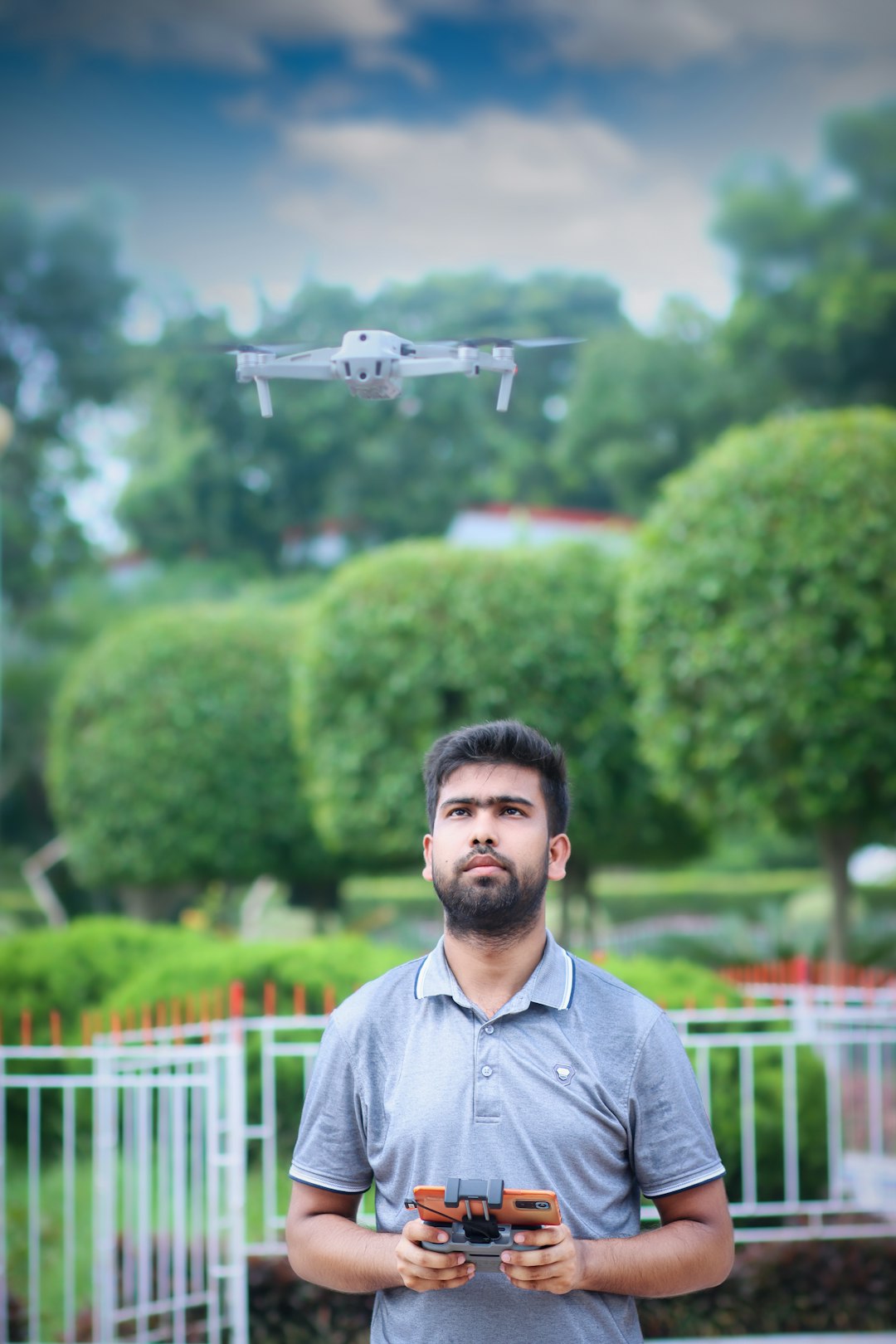
So, which type of drone is the easiest to fly? After soaring through the skies with countless models, our expert team at Drone Brands™ confidently points to compact, GPS-stabilized consumer drones under 250g as the sweet spot for beginners. The DJI Mini 4 Pro stands out as the gold standard, blending intuitive controls, robust safety features, and impressive camera quality into a sleek, lightweight package that feels like it’s got your back on every flight.
Positives of DJI Mini 4 Pro:
- Exceptional stability thanks to GPS and omnidirectional obstacle avoidance.
- User-friendly intelligent flight modes that automate complex maneuvers.
- Compact and lightweight design that doesn’t require FAA registration in many countries.
- High-quality 4K camera for stunning aerial shots.
- Reliable battery life for extended flying sessions.
Negatives:
- Slightly higher price point compared to toy drones.
- Obstacle avoidance may struggle in very low light or complex environments.
- Advanced features might be overwhelming for absolute novices without some practice.
If you’re on a budget or want a super simple indoor flyer, the Ryze Tello is a charming little starter that teaches the basics without breaking the bank. For those wanting a DJI alternative, the Potensic Atom 2 offers many smart features at a friendly price.
Remember, the easiest drone to fly is the one you feel comfortable with. Start slow, respect local laws, and practice often. With the right drone and mindset, your aerial adventures will be smooth, safe, and spectacular.
Ready to take off? Your first flight awaits—happy flying! 🚁
🔗 Recommended Links for Aspiring Drone Pilots
👉 Shop Our Top Beginner Drones:
-
DJI Mini 4 Pro:
Amazon | Walmart | DJI Official Website -
Ryze Tello:
Amazon | Walmart | Ryze Official Website -
Potensic Atom 2:
Amazon | Walmart | Potensic Official Website
Recommended Books for Drone Pilots:
- “The Drone Pilot’s Handbook: A Beginner’s Guide to Flying and Photography” by Adam Juniper — Amazon Link
- “Drones for Dummies” by Mark LaFay — Amazon Link
- “FPV Flight Dynamics: Mastering Acro Mode on High-Performance Drones” by Christian Mollica — Amazon Link
❓ Frequently Asked Questions (FAQ) About Easy Drones
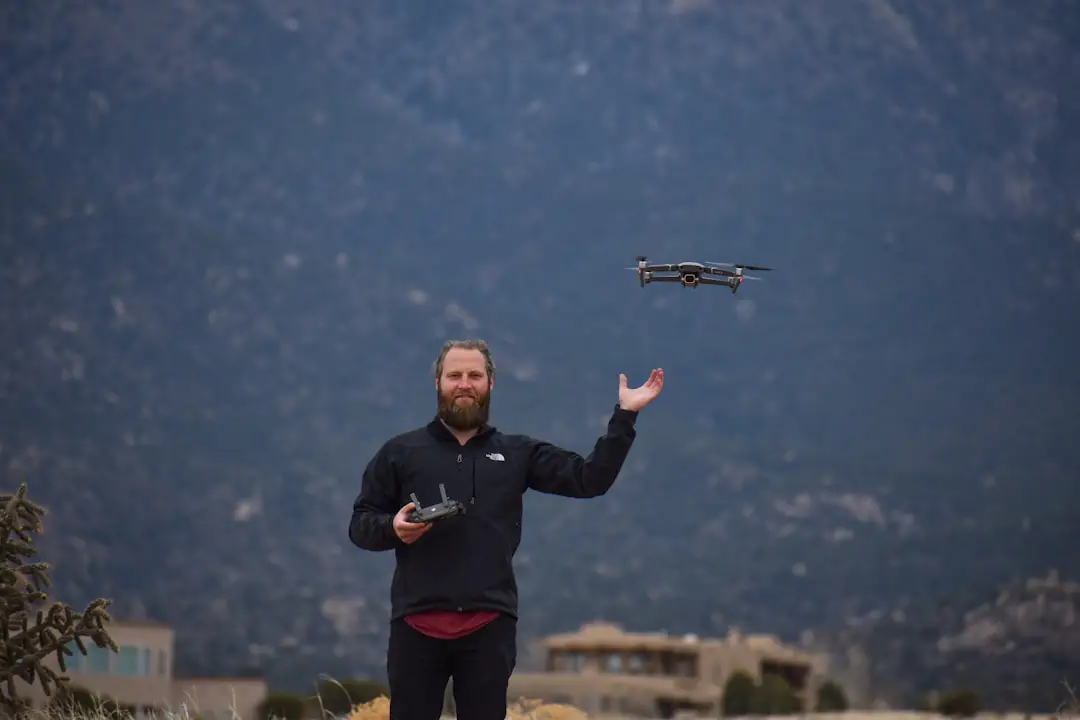
What features should I look for in a beginner-friendly drone?
Look for GPS stabilization, auto-hover, and return-to-home features. These help keep the drone steady and safe. Obstacle avoidance sensors add an extra layer of protection, while intelligent flight modes like Follow Me or Orbit simplify flying. Also, a lightweight design (under 250g) often means easier handling and fewer regulatory hurdles. Finally, an intuitive controller or app with clear tutorials will shorten your learning curve.
Read more about “DJI Drones: 17 Must-Know Facts, Reviews & Pro Tips for 2025 🚁”
How do I choose the right drone for my skill level and experience?
Start by assessing your goals: casual fun, photography, or racing? Beginners should pick drones with stability and safety features rather than speed or complex controls. Consider your budget and where you’ll fly (indoors vs. outdoors). If you want to grow your skills, invest in a drone like the DJI Mini 4 Pro that offers room to learn advanced features. For absolute newbies or kids, a simple toy drone like the Ryze Tello is ideal.
Read more about “Where Can I Fly My Drone with My Phone? Top 10 Spots in 2025 🚁”
What are the most stable and forgiving drone models for new pilots?
Models with GPS-assisted flight, auto-hover, and obstacle avoidance are the most forgiving. The DJI Mini 4 Pro and Potensic Atom 2 excel here. The Ryze Tello is stable indoors but lacks advanced sensors. Avoid FPV racing drones initially—they require precise manual control and are less forgiving.
Are there any specific drone brands that are known for being easy to fly and maneuver?
Yes! DJI is the industry leader for beginner-friendly drones, offering excellent stability, safety features, and user-friendly apps. Ryze Robotics (with the Tello) targets beginners and education. Potensic provides affordable alternatives with solid features. For selfie drones, HoverAir and DJI Neo offer simple, automated flying experiences.
How important is drone weight for beginners?
Drone weight affects flight stability, wind resistance, and legal requirements. Drones under 250g are easier to handle, less affected by wind, and often exempt from registration in countries like the US. Heavier drones may offer better cameras but require more skill to control.
Read more about “Which Drones Are American Made? 11 Top Picks for 2025 🇺🇸”
Can I learn to fly a drone without a physical controller?
Absolutely! Many beginner drones, like the Ryze Tello, use smartphone apps with virtual joysticks. While less tactile, these apps often include beginner modes and tutorials. However, dedicated controllers provide better precision and responsiveness, which is helpful as you progress.
What safety precautions should beginners take when flying drones?
Always fly in open, legal areas away from people, animals, and restricted zones. Perform pre-flight checks, keep the drone within line of sight, and avoid flying in bad weather. Use beginner modes and don’t push your drone’s limits too soon. Familiarize yourself with local drone laws (Drone Laws and Regulations) to stay compliant.
Read more about “🚀 What is the Highest Flying Drone? 13 Jaw-Dropping Records (2025)”
📚 Reference Links & Further Reading
- DJI Official Website – https://www.dji.com
- Ryze Robotics Official – https://www.ryzerobotics.com
- Potensic Official – https://www.potensic.com
- FAA Drone Zone (US Drone Registration & Rules) – https://faadronezone.faa.gov
- UK Civil Aviation Authority Drone Guidance – https://register-drones.caa.co.uk
- PCMag: The Best Drones for 2025 – https://www.pcmag.com/picks/the-best-drones
- TechRadar: Best Beginner Drones – https://www.techradar.com/best/best-beginner-drones
- New York Times Wirecutter: Best Drones – https://www.nytimes.com/wirecutter/reviews/best-drones/
Ready to take your first flight with confidence? Bookmark this guide, pick your drone, and enjoy the skies! 🚀
